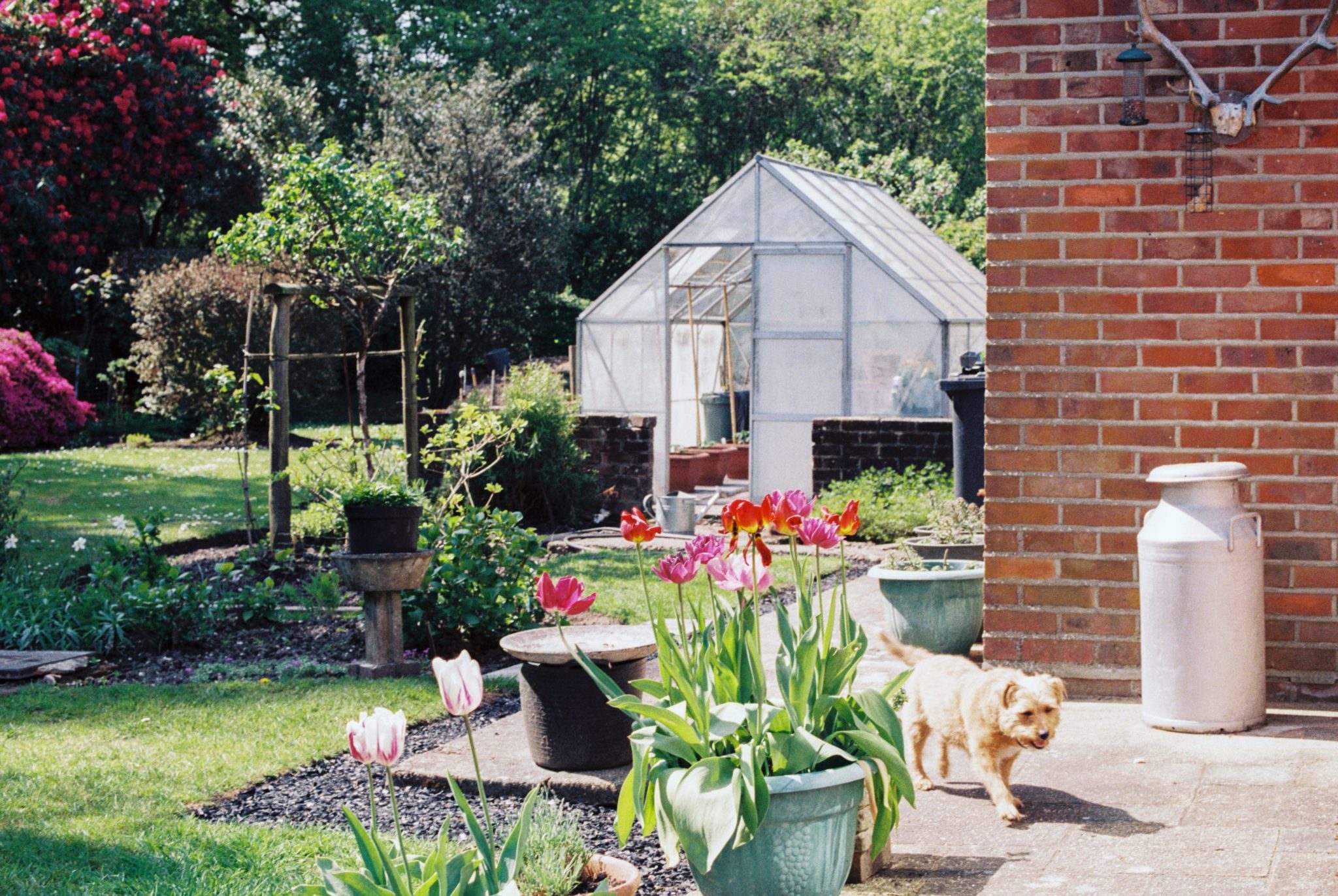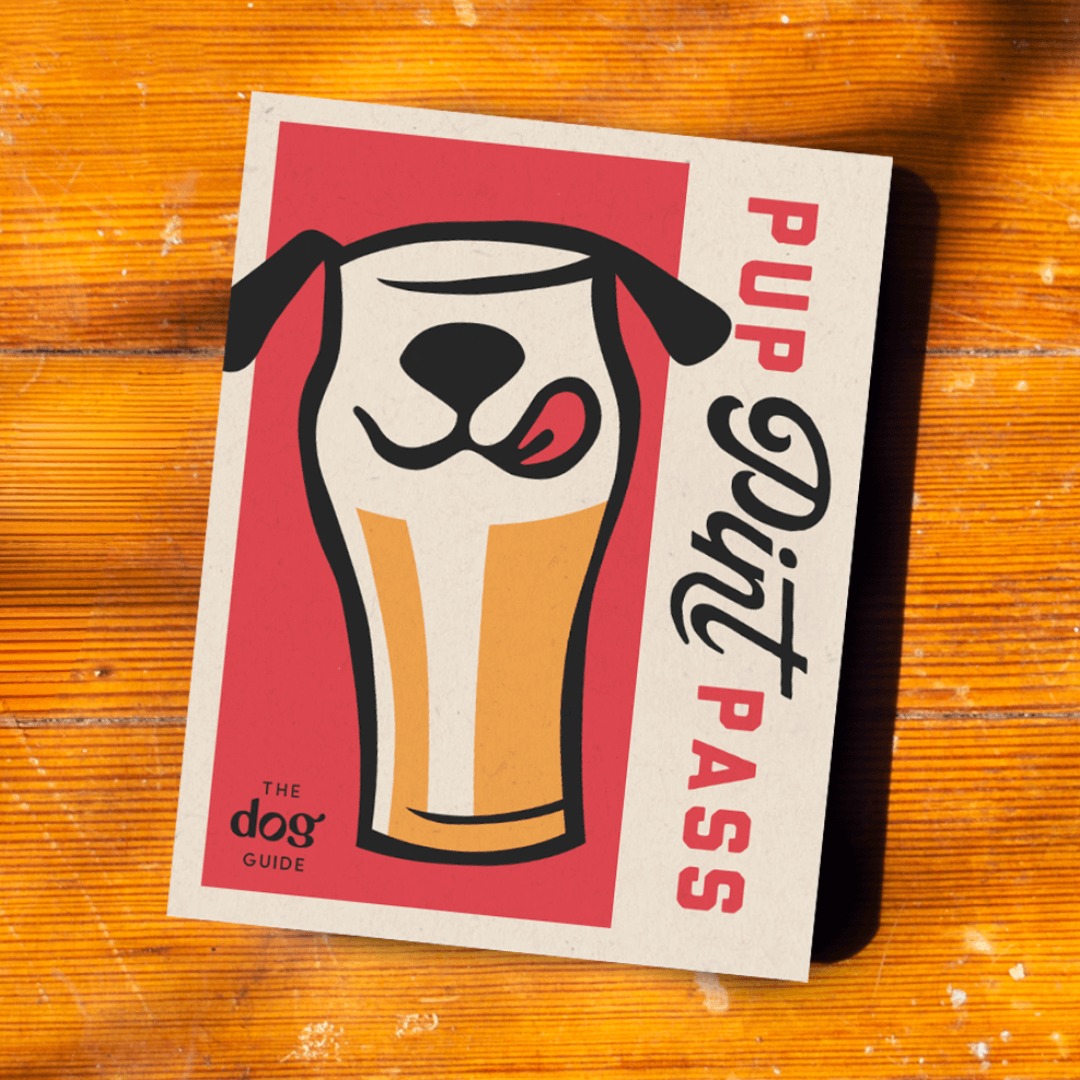
Spring is just around the corner! One of the things I am most excited about is planting my spring and summer garden, as well as landscaping both my front and back yard. As I research what I want to do in my backyard, one of my top priorities is to create something dog-friendly and dog-proof! This is known as “dog-scaping.” The goal of dog-friendly landscaping is to create a safe, fun space for your dog to enjoy without tearing it up or causing additional work for you. Nothing is worse than spending a weekend planting only to watch your dog destroy it in one minute.
Dog-friendly landscaping in South Central Texas can be a challenge. Not only do you want to find something non-toxic and durable enough to stand up to zoomies, but we San Antonians must also navigate intense sun, heat, and drought!
I’ve put together my top five tips for creating the ultimate dog-friendly backyard in South Central Texas that you and your dog can enjoy together.
1. Plan the Space
The key to dog-friendly landscaping is to plan ahead. Before you even start to pick out what plants you want, take a moment to plan out your space. As a visual-type person, I like to roughly sketch out what space I’m working with (VERY roughly, I should say). Decide what you want in your backyard and where you want it. Some things to consider are how much space you have, how much work you want to put into it, and what your dog’s personality is.
If you have a large backyard, you might designate certain areas specifically for your dog to run through, play in, and do their business. But, if you have a smaller yard, you might consider making the entire area more dog-proof to stand up to those zoomies. If you are the type who loves spending a lot of time working in the yard, you might opt to build a raised garden bed, install a dog-friendly pond, or plant flowers that require a little more love and care on a regular basis. Alternatively, if you are like me, you want to create something more self-sufficient.
Finally, consider what your dog would enjoy in your backyard. If your dog is a digger (looking at you, terrier terrors!), consider creating a “sandbox” for them to play and dig in. This will keep them from digging in other areas where they shouldn’t, like your flower beds. Perhaps your dog loves the water; consider a pond or kiddie pool where your dog can cool off on those hot summer days.
There are lots of ideas to consider, so here are some of my favorites.
Dog Friendly Landscaping Ideas:
- A pergola or patio with shade as a space for humans and dogs to hang out. You can check out Toja Grid for an easy, modular pergola system.
- A water feature or kiddie pool for your dog to splash around in. Make sure it’s easy for your dog to get into and out of safely, and that you can keep it clean throughout the summer. It’s also a good idea to place it on decomposed granite or flagstone to prevent mud problems.
- A sandbox space for your dog to dig in.
- A designated area for your dog to do their business. This can be specifically landscaped with hardy plants and decomposed granite to avoid urine spots and make poop easy to pick up and dispose of. If you have a male dog, create a specific “marking post.”
- A raised garden bed with produce for you and your pup! Summer favorites include tomatoes, green beans, and zucchini.
- A dog run. If you have enough space, you might fence off part of your yard specifically for the dog. This helps prevent your pup from running through your plants, tearing up your lawn, etc.
2. Pick your Plants
Now that you have planned out your space, it’s time to pick what plants you want to add. This is key to dog-friendly landscaping! Choosing plants can be tricky, as you want something non-toxic and durable for your pup, but also something heat tolerant and drought hardy for the climate! Avoid plants with thorns or stickers, as well as plants that drop a lot of fruit. Even fruit that is safe for your pet to eat can result in an upset tummy if consumed in large quantities, and if your dogs are anything like mine, they basically function like a vacuum for your backyard.
Definitely do your own research based on what YOU want (aesthetics, maintenance levels, etc), and don’t be shy about taking to your local landscaping business. I love Shades of Green, and the staff are always wonderfully helpful with suggestions that meet my needs.
You can also consult the ASPCA’s page for toxic and non-toxic plants. It’s not a complete list, of course, but it’s fairly extensive.
That said, here are some of my top picks:
Trees
- Crepe Myrtle: Full sun for best blooms
- Citrus Trees: Full sun, but needs water
- Vitex or Chaste Tree: Full sun, very drought hardy. Prune to desired shape.
Shrubs
- Texas Sage: Full sun, drought hardy
- Indian Hawthorne: Full sun, very fragrant flowers
- Pittosporum: Partial shade to full sun
Flowering Plants
- Agastache: Full sun
- Salvia: Full sun
- Crossvine: Full sun, a climbing vine
- Bee balm: Partial sun
Decorative Grasses
- Pink Muhly Grass: Partial to full sun
- Bamboo Muhly: Dappled sun
- Purple Fountain Grass: Full sun
Turf
- Buffalo Grass
- Bermuda grass
3. Avoid the Bad Stuff
Once you’ve chosen your plants, there are a few things to keep in mind to maintain your dog-friendly landscaping. For one, be mindful of the products you use in your backyard. This includes fertilizers, pesticides, and herbicides. Many can be very toxic to pets! Opt for organic, natural fertilizers as much as possible, or just use compost to keep your plants well fed and fertilized.
I recommend avoiding pesticides if possible, because many are toxic to beneficial insects like bees and butterflies as well as pets. If you need a pesticide, find something that is both pet safe and won’t harm the “good” insects.
Same thing with herbicides. If you are battling unwanted weeds, be mindful of any chemical plant killers you use. If you must use an herbicide or pesticide—even one labeled as dog safe—I recommend keeping your dog indoors afterwards for at least a few hours to prevent exposure.
Finally, it is important to maintain your dog-friendly back yard. Avoid piles of brush or debris which can house unwanted pests like the invasive Kissing Bug which transmits the deadly Chagas disease. You will also want to avoid standing water, as that provides an ideal breeding spot for mosquitos. Keep water features clean, and address any boggy areas that might occur (like in your gutters).
4. Prevent Pests
On that note, plan ahead to prevent pests! Fleas, ticks, mosquitos, kissing bugs, and more can all pose a health concern both for your dog as well as for humans. One of the absolute best defenses you can utilize that is perfectly dog-safe is diatomaceous earth! This substance is very cheap and readily available at almost any landscaping or home improvement store.
Diatomaceous earth is made from crushed fossils of freshwater organisms and marine life. It is completely non-toxic to pets and humans, but very deadly to insects. The way it works is purely mechanical. The microscopic particles settle into the exoskeleton of insects and shred them from the inside. Pretty savage, right?
I use a flour sifter to sprinkle diatomaceous earth throughout the lawn, across flower beds, and to create a ring around my house. I pay extra attention to doorways and windows. If an insect walks through the ring, they will die. It’s that simple. You can also mix diatomaceous earth with a bit of water to spray on your plants. This is one of the easiest ways to apply it to large areas.
The only thing to keep in mind with diatomaceous earth is to be careful when applying it. The dust is very fine and can irritate your skin, eyes, and lungs if inhaled.
5. Troubleshoot the Problems
Alright. You’ve planned your space. You’ve chosen your plants. And, you’ve taken measures to keep your backyard dog safe and prevent unwanted pests. As the season wears on, you can troubleshoot problems with your dog-friendly landscaping as they arise. Are unsightly urine spots a problem? Consider adding a supplement to your dog’s diet to help. Is your dog tearing through your flower beds? Find a fence or decorative feature that can act as a barrier.
Landscaping will always be a journey rather than a destination. If something isn’t working out, don’t be afraid to pivot and try something else.
Now, grab yourself a cold beer or iced tea and enjoy your hard work. After all, that’s the best part about landscaping, right?



